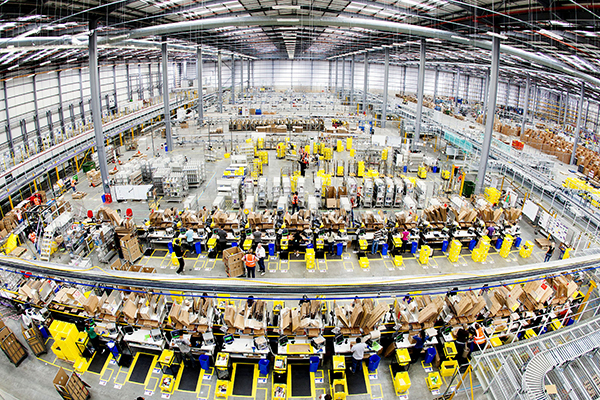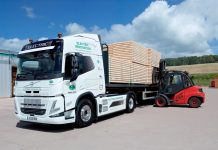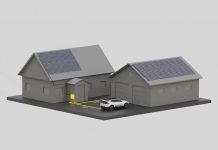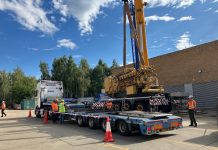More solar PV atop its UK distribution centres and data warehouses is among 1GW of new renewable generating capacity added by Amazon so far this year in Europe alone. Pictured; its centre in Hemel Hempstead, north of London.
The tech leviathan today said its 39 new renewable projects already completed or begun in 2023 will bring its continent-wide capacity to 5.GW, as delivered by its more than 160 wind and solar projects in 13 countries.
Its investments in datacentres and their electrification stimulated €2.4 billion in economic investment last year alone in Europe, the company says, supporting more than 2,900 jobs. Independent verification of those figures comes from consultants Oxford Economics.
That rush means Jeff Bezos’ re-shaper of global retail and entertainment will now reach its goal of being 100% renewably-powered in 2025, five years ahead of schedule. Last year 90% of the electricity consumed worldwide by its warehouses, data centres and fulfilment depots came from renewables.
Since 2021, Bloomberg New Energy Finance has ranked Amazon as Europe’s largest corporate purchaser of renewable energy.
As well as the UK, recent rooftop PV ventures have taken shape in Belgium, France, Italy, and Spain.
New utility-scale solar and wind projects are located in Finland, Germany, Greece, Spain, and Sweden. In the past twelve months the firm has commissioned its first PV farms in Poland and Greece.
Between 2014 to 2022, Amazon’s European wind and solar farms have helped generate an estimated €2.4 billion in investment in Europe and helped to contribute more than €723 million to the continent’s GDP, according to a new economic model developed by the concern.
Lindsay McQuade, Amazon’s director of energy, EMEA, greeted the numbers. “Amazon is helping to provide new sources of clean energy to local grids, creating jobs, and supporting local businesses as we progress toward powering our operations with 100% renewable energy by 2025,” she said.
“Corporate investment is an important catalyst to help transition toward a clean energy future, and we look forward to continuing to work with governments, local communities, and energy providers across Europe to deliver more renewable energy into local grids.”
To measure the impact of its outlay on the low-carbon generating assets it owns, the company now relies on a new economic model developed in house and externally validated.
The model applies to the utility-scale renewable energy projects that have begun construction or became operational between 2014 and 2022, or are expected to become operational in 2023, resulting from Amazon’s investments in Power Purchase Agreements.
To check out Amazon’s energy development methodology, click here




